Pet ownership in Singapore has steadily increased over the past years. A Business Times article states that Singapore’s pet dogs and cats have grown about 19% in 5 years, reaching 196,000 in 2019. The covid-19 pandemic also sees more house owners getting a pet as a companion as there were more time spent at home due to the work from home arrangement.
Having a pet is a responsibility not to be taken lightly as it is similar to having an additional family member. Especially pets like dogs and cats that are not bound within an enclosed space (i.e. fishes, hamsters, birds etc.) and are free to roam about at home.
Few years ago, a kitten was rescued from the 21st storey ledge of a HDB flat. With 80% of our population residing in Housing Development Board (HDB) flats, it is important for us to take into consideration the mischievous nature of our furry friends and find ways to ensure their safety. Nevertheless, pet proofing is just as important to those who reside in both non-landed and landed private properties.
Taking into account the natural characteristics of a pet while pet proofing your house will go a long way in protecting them from harm and accidents. Read on to find out more about how you can pet proof different parts of your house.
Living Room
There are numerous things that can be hazardous to one’s pet. Unstable or unbalanced furniture can topple over if jumped on or bumped into by a playful animal. Several types of potted house plants are known to be toxic if chewed on or digested. Cords dangling from curtains and window blinds are a choking hazard if pets get tangled up in them; while electrical cords, if nibbled on, can shock or electrocute a pet or create a fire.
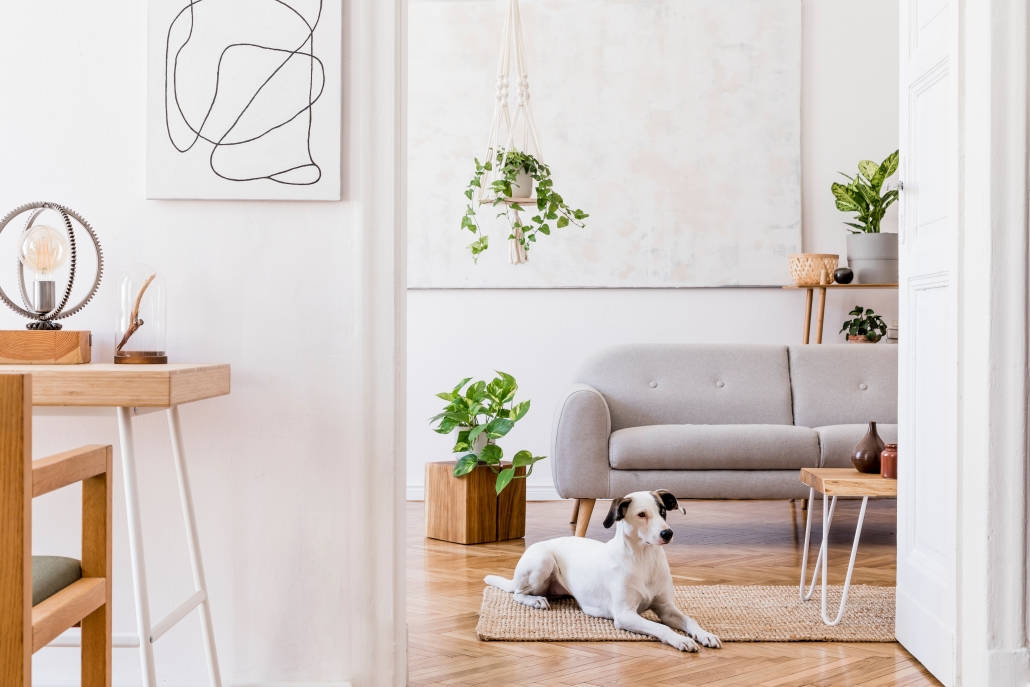
Other items need to be protected so that pets do not destroy or knock them over. Candles, for instance, can light a pet’s tail on fire or be knocked over and start a fire. Furniture and appliances must also be kept safe as they are prone to damage from chewing and scratching. Battery operated items pose health threats to one’s pet as swallowing batteries will poison a pet or cause internal burns.
- Ensure every piece of furniture is well protected and sturdy.
- Move, cover and/or coat (with a deterrent such as bitter apple) cords and electrical wires to deter your pet from chewing or reaching it.
- Never leave candles unsupervised.
- Opt for potted plants that are not poisonous or keep them out of reach.
- Store away loose items such as remote controls, keys or even shoes.
- For felines:
- Ensure your wall shelves are not mounted too high as cats may jump on it and risk injuring themselves if they fall.
- Install wire meshes at windows to prevent cats from squeezing through.
Kitchen
Your kitchen is probably the most dangerous place for your beloved pet(s) to be at. Pets capable of leaping have access to countertops and tables while every pet has easy access to anything within their reach – from trash cans to food on the table. When it comes to threats, food is undoubtedly the number one culprit. Certain types of food (like chocolate and raisins) are extremely toxic whereas others present a choking hazard.
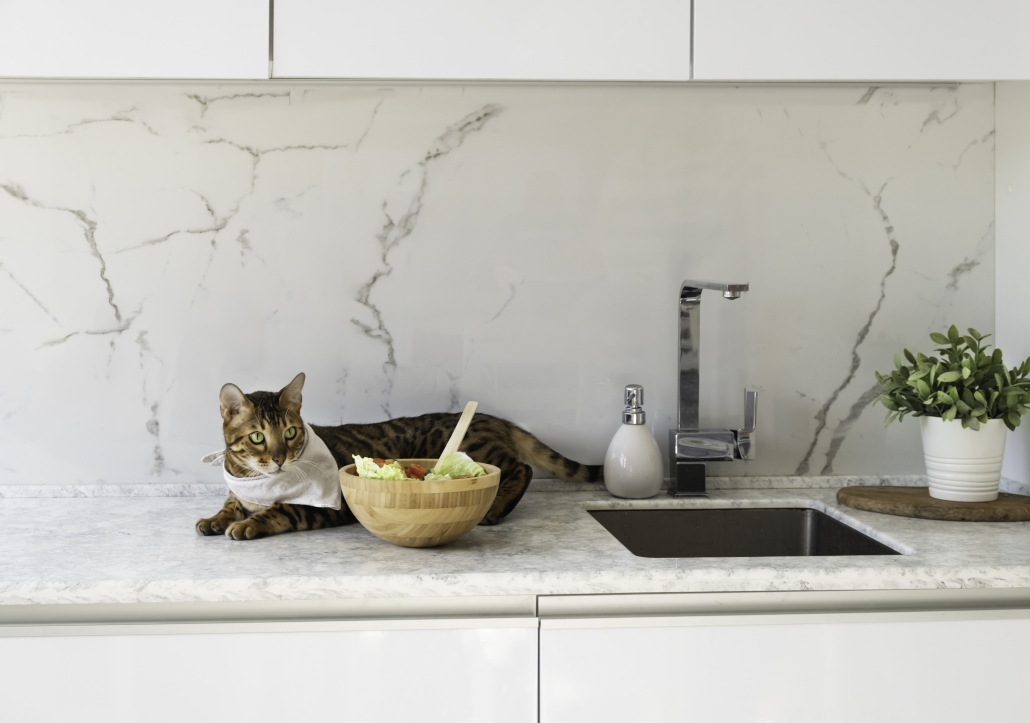
Liquid detergents and dishwashing soap are also poisonous when ingested. Curious in nature, some animals may crawl into small spaces (like the gap under or around your refrigerator) while others may actually climb into small spaces (such as opened dishwashers or dryers). This becomes life threatening when someone unknowingly operates these appliances while your pet is trapped within it.
- Use trash cans that come with secure lids and ensure that they are closed all the time.
- Store poisonous liquids in tightly secured cabinets.
- Block access to small spaces that lead behind kitchen appliances.
- Cover food on the table/counter instead of leaving it exposed.
- Make it a habit to close the doors of dryers/dishwashers after use.
- Consider installing a safety gate to keep pets out of the area while cooking.
Bathroom
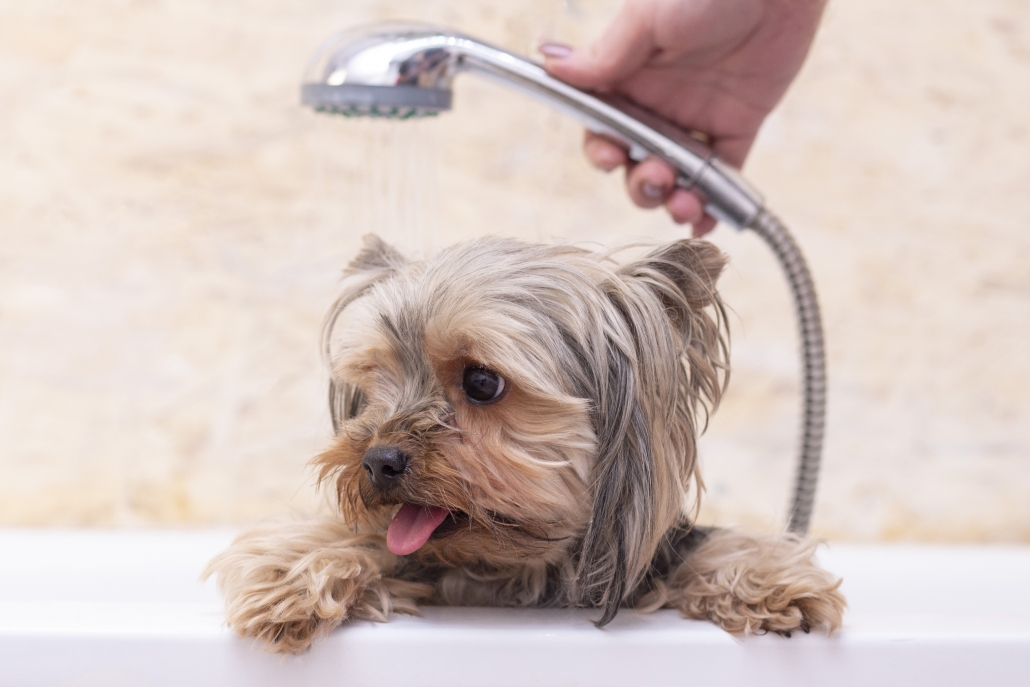
As toilet bowls are perpetually filled with water, pets are often tempted to drink from them. This is unsafe as it may cause your pet to drown or suffer from poisoning if there are toilet bowl cleaners inside. Medications and liquid cleaners that are stored in the bathroom are toxic to pets when chewed on or swallowed. Sharp items, such as razors, that are kept in bathrooms can slice and seriously injure your pet if he/she plays with it.
- Place medications in cabinets that cannot be easily pried open.
- Close lid of toilet bowls when not in use.
- Store razors or any beauty/hygiene tools in cases.
- Keep liquid cleaners in cabinets or ensure that they are tightly sealed.
Bedroom
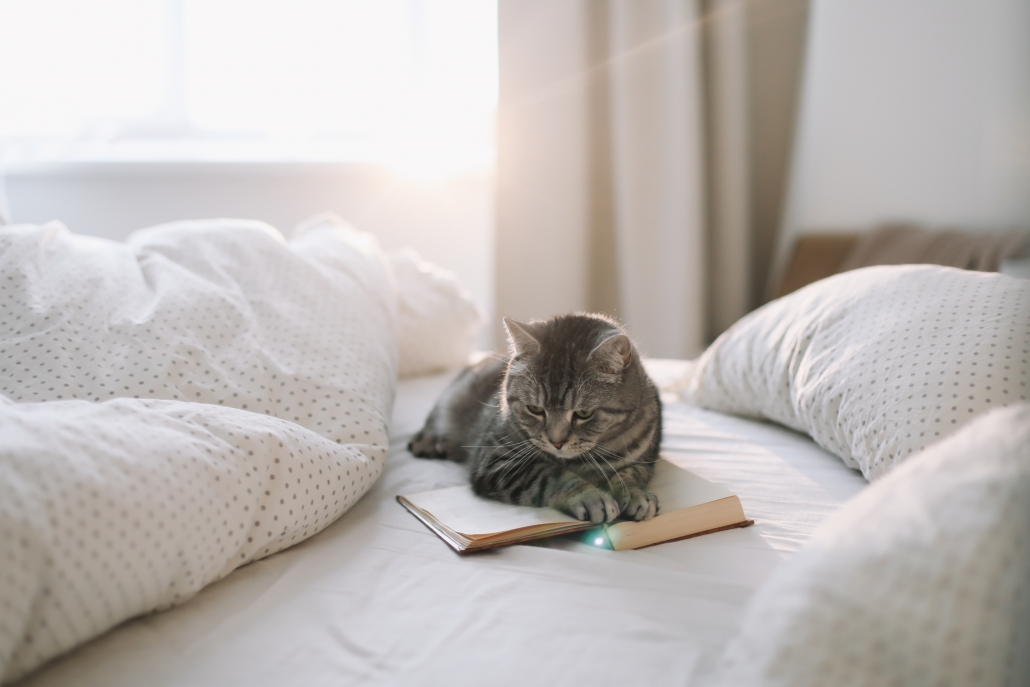
Although bedrooms may seem like a relatively safe place for pets, some items, if not properly tucked away or discarded, may pose serious threats. Electrical cords are dangerous to pets that like to nibble. Small items like earrings or hair pins are also likely to be chewed on by your teething pet. Improperly discarded shopping bags may end up suffocating your pet if he/she plays with it unsupervised. Moth balls placed in closets or drawers are lethal to pets when ingested.
- Tie all loose ends – tuck away dangling cords from blinds, curtains or ceiling fans.
- Ensure windows have screens that are secure and in good conditions.
- Store small items into containers that cannot be reached by pets.
- Use cord covers to prevent pets from chewing electrical cables.
- Keep all doors closed (closets and drawers) so that pets will not end up getting trapped inside.
Garden/Balcony
As animals may occasionally eat leaves, plants that have leaves are prone to being chewed on and swallowed by pets. However, some plants, when ingested, may contain harmful toxins that are damaging to your pet.
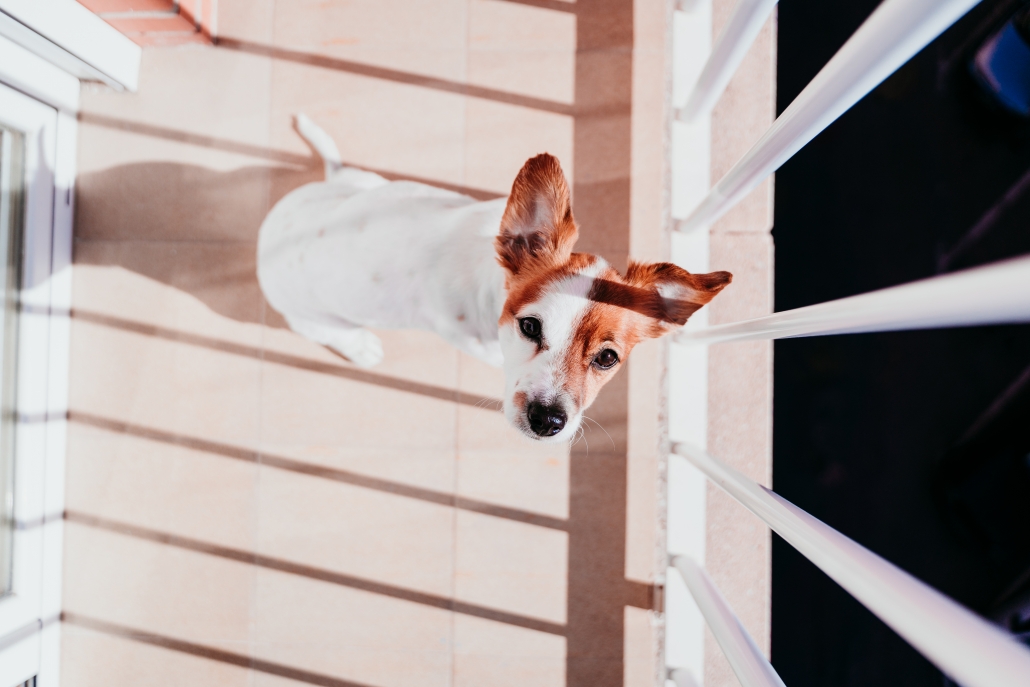
While the balcony may be a good area to house train your pet since it is away from everything else, it can be deadly for your pet as they might fall off the ledge if they get overly curious.
- Fence your garden to prevent stray animals from coming in and your pet from getting out.
- Install ceiling-high grills or mesh at your balcony to prevent any falling.
- Avoid planting poisonous plants in your garden.
- Opt for harmless house plants to be placed at your balcony.
To perfectly pet proof your home, it is important to first gain an understanding of the pet you wish to keep. Dogs and cats, though similar, behave differently. Ideally, pet proofing should be done before you decide to bring a new pet home. Nevertheless, it is not too late to start now! A word of caution: if you live in a HDB flat, ensure that you do not have an illegal occupant in your home. Find out here what type of pets you can or cannot keep in your flat to avoid getting into trouble with the law.
Want to find the best mortgage rate in town? Check out our free comparison service to learn more!
Read more of our posts below!

